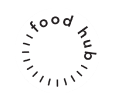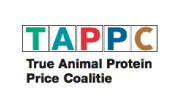GENERAL DIET
A healthy diet throughout your life can prevent illnesses and diseases. The rise of processed foods, living in big cities and changes in lifestyle have brought about a change in our diet. The world population consumes many products that are high in: energy, fats, added sugars and salt.
Western World
A large part of the population in the Netherlands and other Western countries do not take in enough fruit, vegetables and dietary fibre. In 2017, RIVM (The Netherlands National Institute for Public Health and the Environment) established that only about 15% of adults comply with the guidelines for the intake of fruit and vegetables. RIVM also noted that nuts and legumes are not yet common products in the Dutch diet, while they are very important for health.
Source: The diet of the Dutch, RIVM, 2016.
Basic principles of a healthy diet
The basic principles for healthy food, derived from the World Health Organisation (WHO), are as follows. A healthy diet contains:
- Fruit, vegetables, legumes (such as lentils and beans), nuts and whole grains (unprocessed maize, wheat, oats and brown rice.
- At least 400 g (5 portions) of fruit and vegetables per day (this doesn’t include potatoes, sweet potatoes, cassava, etc.)
- 5-10% of the total energy intake may come from added sugars.
- Less than 30% of the total energy intake may come from fats. Unsaturated fats (found in fish, avocado, nuts, sunflower and olive oil) are preferred above saturated fats (found in meat, dairy, palm and coconut oil). Transversal fats are found in heavily processed products that come from manufacturers.
- Products such as: fast food, snacks, fried food, frozen pizza, biscuits, cookies, margarine and spreads are not part of a healthy diet.
Source: Healthy Diet, Key Facts, World Health Organisation, 2015.
Special role for fruit and vegetables
The Dutch Voedingscentrum (Nutrition Centre) says the following about the role of fruit and vegetables: “Fruit and vegetables have a healthy image for a good reason. If you eat enough of them, they reduce the risk of cardiovascular diseases, intestinal cancer and type 2 diabetes”.
The Voedingscentrum recommends: 250 grams of vegetables and two portions of fruit daily (equivalent to about 200 grams).
Source: Groente en fruit, website Voedingscentrum, 2018.
Several (inter)national organisations and institutions agree that fruit and vegetable consumption must be increased in order to reduce the risk of cardiovascular diseases, cancer and type 2 diabetes.
Scientific sources:
Nguyen B. et al. (2016). Fruit and vegetable consumption and all-cause mortality: evidence from a large Australian cohort study. International Journal of Behavioral Nutrition and Physical Activity, (13):9. doi: 10.1186/s12966-016-0334-5.
Conclusions: Fruit and vegetable consumption were inversely related to all-cause mortality in this large Australian cohort. Further studies examining the effects of raw versus cooked vegetables are needed.
Aune D. et al. (2017). Fruit and vegetable intake and the risk of cardiovascular disease, total cancer and allcause mortality—a systematic review and dose response meta-analysis of prospective studies. International Journal of Epidemiology, Jun, 1 (46), 1029–1056. doi: 10.1093/ije/dyw319.
Conclusions: Fruit and vegetable intakes were associated with reduced risk of cardiovascular disease, cancer and all-cause mortality. These results support public health recommendations to increase fruit and vegetable intake for the prevention of cardiovascular disease, cancer, and premature mortality.
Schwingshackl L. et al. (2017). Food groups and risk of all-cause mortality: a systematic review and meta-analysis of prospective studies. The American journal of clininal nutrition, (105), 1462–73. doi: 10.3945/ajcn.117.153148.
Conclusions: Selecting specific optimal intakes of the investigated food groups can lead to a considerable change in the risk of premature death.
Blando F. et al. (2018). Radical Scavenging and Anti-Inflammatory Activities of Representative Anthocyanin Groupings from Pigment-Rich Fruits and Vegetables. International journal of molecular science, (9)1, 169. doi: 10.3390/ijms19010169.
ORGANIC FOOD
‘Research has shown that organic food contains up to 40% more active ingredients that have a positive effect on our health.’
This statement is supported by the following sources:
Baranski M. et al. (2014). Higher antioxidant and lower cadmium concentrations and lower incidence of pesticide residues in organically grown crops: a systematic literature review and meta-analyses. British Journal of Nutrition, (112), 794–81.
Muller A. et al. (2017). Strategies for feeding the world more sustainably with organic agriculture. Nature Communications, (8): 1290. DOI: 10.1038/s41467-017-01410-w.
Lupatini M. et al. (2016). Soil Microbiome Is More Heterogeneous in Organic Than in Conventional Farming System. Frontiers in Microbiology, (7): 2064.
AVOCADO
The avocado contains a high level of monounsaturated fatty acids, and therefore has a beneficial effect on the cholesterol levels in the blood and reduces the risk of cardiovascular disease. In addition, avocado contains beneficial phytonutrients, vitamins and minerals, and improves metabolic syndrome.
These statements are supported by the following sources:
Tabeshpour, J., & Tazavi, B.M., Hosseinzadeh, H. (2017). Effects of Avocado (Persea americana) on Metabolic Syndrome: A Comprehensive SystematicReview. Phytotherapie Research. Jun;31(6), 819-837. doi: 10.1002/ptr.5805.
Wang, L., & Bordi, P.L., & Fleming, J.A., & Hill, A.M., & Kris-Etherton, P.M. (2015). Effect of a moderate fat diet with and without avocados on lipoprotein particle number, size and subclasses in overweight and obese adults: a randomized, controlled trial. Journal of the American Heart Association. Jan 7;4(1):e001355. doi: 10.1161/JAHA.114.001355.
BEETROOT
Beets have always been regarded as quite ordinary vegetables, and even as harmful because they contain nitrates. It is precisely for this reason that beetroot and other vegetables rich in nitrates are now in the spotlight, as nitrates have proved to be particularly beneficial to the heart and blood vessels. They provide nitrogen monoxide that has a blood vessel widening effect. Beetroot also contains phytonutrients (betalains) that are anti-oxidative and anti-inflammatory. That's why athletes like to use it too.
These statements are supported by the following sources:
Clifford, T., & Howatson, G., & West, D.J., & Stevenson, E.J. (2015). The potential benefits of red beetroot supplementation in health and disease. Nutrients, Apr 14;7(4), 2801-22. doi: 10.3390/nu7042801.
Kapil, V., & Khambata, R.S., & Robertson, A., & Caulfield, M.J., & Ahluwalia, A. (2015). Dietary Nitrate Provides Sustained Blood Pressure Lowering in Hypertensive Patients, A Randomized, Phase 2, Double-Blind, Placebo-Controlled Study. Hypertention, Feb; 65(2), 320-327. doi: 10.1161/HYPERTENSIONAHA.114.04675.
BLUEBERRIES
Blueberries (cultivated as well as wild) are real champions when it comes to health. They are packed with different types of phenols and have a large anti-oxidative power. Blueberries help to prevent cancer and diabetes and reduce inflammation.
These statements are supported by the following sources:
Olas, B. (2018). Berry Phenolic Antioxidants - Implications for Human Health? Frontiers in Pharmacology, Mar 26(9), 78. doi: 10.3389/fphar.2018.00078.
Davidson, K.T., & Zhu, Z., & Balabanov, D., & Zhao, L., & Wakefield, M.R., & Bai, G., & Fang, Y. (2017). Beyond Conventional Medicine - a Look at Blueberry, a Cancer-Fighting Superfruit. Pathology Oncology Research, Dec 28 [Epub ahead of print]. doi: 10.1007/s12253-017-0376-2.
TURMERIC
Curcumin, belonging to the group of polyphenols and found in turmeric, has an effect on more than 600 different genes. The beneficial effects are widely varied, and range from anti-oxidative effects, inhibiting inflammation, reducing pain, improving liver detoxification, combating fatty liver disease and the prevention of cancer, to improving depressions, diabetes and cardiovascular problems.
These statements are supported by the following sources:
Tizabi, Y., & Hurley, L.L., & Qualls, Z., & Akinfiresove, L. (2014). Relevance of the anti-inflammatory properties of curcumin in neurodegenerative diseases and depression. Molecules, Dec 12;19(12), 20864-79. doi: 10.3390/molecules191220864.
Chuengsamarn, S., & Rattanamongkolgul, S., & Luechapudiporn, R., & Phisalaphong, C. Jirawatnotai, S. (2012). Curcumin extract for prevention of type 2 diabetes. Diabetes Care, Nov;35(11):2121-7. doi: 10.2337/dc12-0116.
Deguchi, A. (2015). Curcumin targets in inflammation and cancer. Endocrine, metabolic & immune disorders - Drug targets, 15(2), 88-96.
Simioni, C., & Zauli, G., & Martelli, A.M., & Vitale, M., & Sacchetti, G., & Gonelli, A., & Neri, L.M. (2018). Oxidative stress: role of physical exercise and antioxidant nutraceuticals in adulthood and aging. Oncotarget, Mar 30;9(24), 17181-17198. doi: 10.18632/oncotarget.24729.
Feng, W.W., & Kuang, S.Y., & Tu, C., & Ma, Z.J., & Pang, J.Y., & Wang, Y.H., & Zang, Q.C., & Liu, T.S, & Zhao, Y.L, & Xiao, X.H., & Wang, J.B. (2018). Natural products berberine and curcumin exhibited better ameliorative effects on rats with non-alcohol fatty liver disease than lovastatin. Biomedicine & Pharmacotherapy, Mar(99), 325-333. doi: 10.1016/j.biopha.2018.01.071.
Chen, Q., & Wang, T., & Li, J., & Wang, S., & Qiu, F., & Yu, H., & Zhang, Y., & Wang, T. (2017). Effects of Natural Products on Fructose-Induced Nonalcoholic Fatty Liver Disease (NAFLD). Nutrients, Jan 31;9(2). pii: E96. doi: 10.3390/nu9020096.
GINGER
Gingerol is the well-known phytonutrient from ginger and is an antioxidant. Ginger is traditionally used against (pregnancy) nausea, and appears to help with stomach complaints, inflammation and migraine, and prevents diabetic complications.
These statements are supported by the following sources:
Mohd Yusof, Y.A. (2016). Gingerol and Its Role in Chronic Diseases. Advances in experimental medicine and biology, 929, 177-207.
Maghbooli, & M., Golipour, F., & Moghimi Esfandabadi, A., & Yousefi, M. (2014). Comparison between the efficacy of ginger and sumatriptan in the ablative treatment of the common migraine. Phytotherapy Research, Mar;28(3), 412-5. doi: 10.1002/ptr.4996.
Siddaraju, M.N., & Dharmesh, S.M. (2007). Inhibition of gastric H+, K+-ATPase and Helicobacter pylori growth by phenolic antioxidants of Zingiber officinale. Molecular Nutrition & Food Research, Mar;51(3), 324-32.
Arablou, T, & Aryaeian, N., & Validazeh, M., & Sharifi, F. & Hosseini, A., Djalalj, M. (2014). The effect of ginger consumption on glycemic status, lipid profile and some inflammatory markers in patients with type 2 diabetes mellitus. International Journal of Food Sciences and Nutrition, Jun;65(4), 515-20. doi: 10.3109/09637486.2014.880671.
GARLIC
Contains a large number of sulphur-containing phytonutrients such as allicin and thiosulphinates, which support the immune system and can even combat some bacterial infections. In addition, garlic has long been known for its blood pressure reducing properties and its beneficial effect on the complications of type 2 diabetes.
These statements are supported by the following sources:
Jakobsen, T.H., & Warming, A.N., & Vejborg, R.M., & Moscoso, J.A., & Stegger, M., & Lorenzen, F., & Rubtke, M., & Andersen, J.B., & Petersen, R., & Andersen, P.S., & Nielsen, T.E., & Tolker-Nielsen, T., & Filloux, A., & Ingmer, H., & Givskoy, M. (2017). A broad range quorum sensing inhibitor working through sRNA inhibition. Scientific Reports, Aug 29;7(1), 9857. doi: 10.1038/s41598-017-09886-8.
Xiong, X.J., & Wang, P.Q., & Li, S.J., & Li, X.K., & Zhang, Y.Q., & Wang, J. (2015). Garlic for hypertension: A systematic review and meta-analysis of randomized controlled trials. Phytomedicine, Mar 15;22(3), 352-61. doi: 10.1016/j.phymed.2014.12.013.
Lee, Y.M., & Gweon, O.C., & Seo, Y.J., & Im, J., & Kang, M.J., & Kim, M.J., & Kim, J.I. (2009). Antioxidant effect of garlic and aged black garlic in animal model of type 2 diabetes mellitus. Nutrition Research and Practice, Summer;3(2), 156-61. doi: 10.4162/nrp.2009.3.2.156.
CUCUMBER
The cucumber consists of 95% water, and therefore provides fluids and coolness in the summer. A slice of cucumber on closed eyes reduces wrinkling. The cucumber contains a number of phytonutrients. These are bio-active substances that are only present in plant food and have specific health effects. In the case of cucumbers, these are different types of flavonols and lignans, which can help to prevent inflammation and, as an antioxidant, combat harmful free radicals.
These statements are supported by the following sources:
Nema, N.K., & Maity, N., Sarkar, B., Mukherjee, P.K. (2011). Cucumis sativus fruit-potential antioxidant, anti-hyaluronidase, and anti-elastase agent. Archives of Dermatological Research, May;303(4), 247-52. doi: 10.1007/s00403-010-1103-y.
Mukherjee, P.K., & Nema, N.K., & Maity, N., & Sarkar, B.K. (2013). Phytochemical and therapeutic potential of cucumber. Fitoterapia, Jan(84), 227-36. doi: 10.1016/j.fitote.2012.10.003.
Kumar, D., & Kumar, S., & Singh, J., & Narender, & Rashmi, & Vashistha, B.D., & Singh, N. (2010). Free Radical Scavenging and Analgesic Activities of Cucumis sativus L. Fruit Extract. Journal of Young Phramacists, Vol 2 / No 4, 365-368.
BELL PEPPER
Bell pepper, with its rich shades of colour is rich in carotenoids, vitamin C and potassium, and belongs to the pepper family. The red variant contains twice as much vitamin C as the green one. Carotenoids are antioxidants and are particularly well known for their beneficial effects on eye diseases; however, cardiovascular diseases are also favourably influenced by these phytonutrients.
These statements are supported by the following sources:
Eggersdorfer, M., & Wyss, A. (2018). Carotenoids in human nutrition and health. Archives of Biochemistry and Biophysics, Jun 6(652), 18-26. doi: 10.1016/j.abb.2018.06.001.
Umigai, N., & Murakami, K., & Shimizu, R., & Takeda, R., & Azuma, T. (2018). Safety Evaluation and Plasma Carotenoid Accumulation in Healthy Adult Subjects after 12 Weeks of Paprika Oleoresin Supplementation. Journal of Oleo Science, Feb 1;67(2), 225-234. doi: 10.5650/jos.ess17155.
PINEAPPLE
The pineapple is rich in the enzyme bromelain. Enzymes are used by the body to prevent and reduce inflammation. Pineapple can help to cure inflammations such as cavity infections or tendinitis (an inflammation of a tendon) in athletes.
These statements are supported by the following sources:
Braun, J.M., & Schneider, B., & Beuth, H.J. (2005). Therapeutic use, efficiency and safety of the proteolytic pineapple enzyme Bromelain-POS in children with acute sinusitis in Germany. In Vivo, Mar-Apr;19(2), 417-21.
Aiyegbusi, A., & Olabiyi, O., & Noronha, C., & Okanlawon, A.O. (2011). A comparative study of the effects of bromelain and fresh pineapple juice on the early phase of healing in acute crush achilles tendon injury. Journal of Medicinal Food, Apr;14(4), 348-52. doi: 10.1089/jmf.2010.0078
SWEET POTATO
The sweet potato contains carbohydrates that are special because they take care of the intestinal microbes and keep them in balance and have an influence on the metabolism. They also contain numerous phytonutrients such as phenolic acids and carotenoids. The health effects of sweet potatoes are very diverse: hepatic protection, antioxidative, obesity reduction and the prevention of diabetes and age-related diseases.
These statements are supported by the following sources:
Wang, S., & Nie, S., Zhu, F. (2016). Chemical constituents and health effects of sweet potato. Food Research International, Nov;89(Pt 1), 90-116. doi: 10.1016/j.foodres.2016.08.032.





























